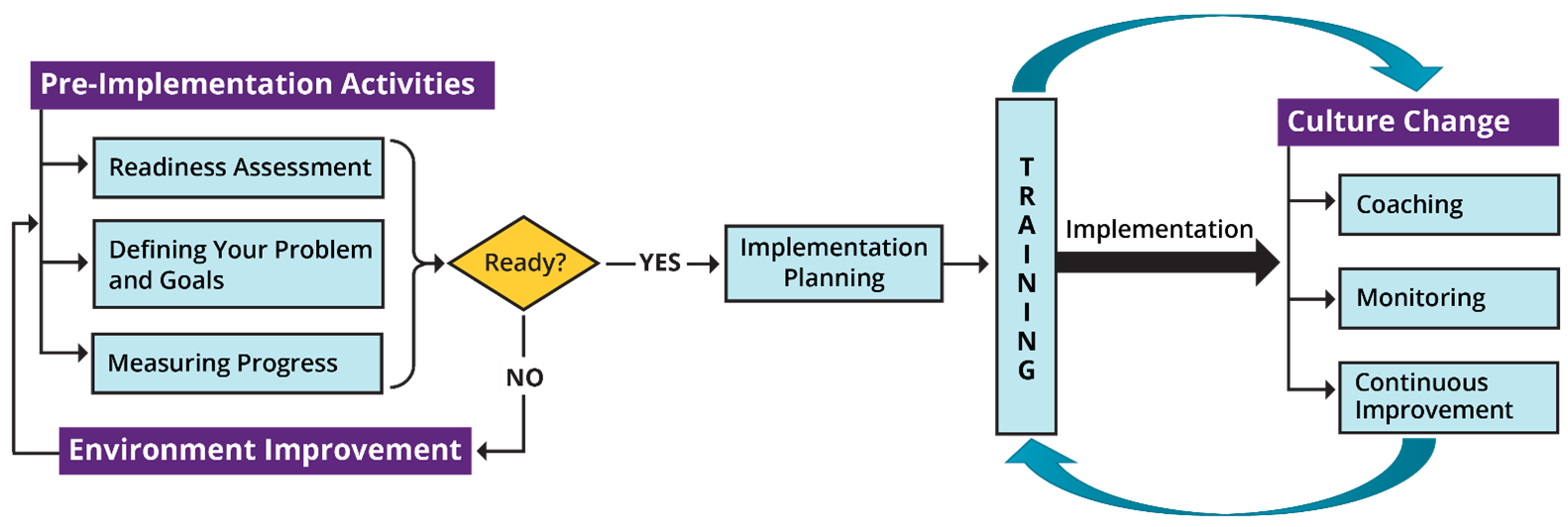Key Implementation Phases and Activities
The figure below provides an overview of the key processes required for any successful implementation.
- Pre-implementation activities begin by assessing readiness and considering the goals of your implementation and how they will be measured.
- Active implementation begins with planning and is followed by initial TeamSTEPPS training.
- Implementation continues with additional training, coaching and monitoring, and effective use of change management strategies to foster and sustain a culture of safety.
Key Implementation Activities

Collectively, the implementation activities discussed in this implementation section address five key issues: readiness assessment, measurement, implementation, change management, and coaching. Specifically:
- Readiness Assessment: This foundational activity comes first and is essential to consider before beginning to implement. It may identify obstacles that must be addressed before a TeamSTEPPS implementation is likely to succeed.
- Measurement: Measurement should always be informed by specific implementation goals such as reducing avoidable readmissions, improving safety culture, or achieving other quantifiable and desirable outcomes. You need to make measurement plans at the start of implementation to quantify the extent of the problem and obtain baseline information. It should continue as you assess training activities and the impact of the implementation on outcomes and culture.
- Implementation Planning: Planning should precede implementation and ensure that all implementation activities and measurement are aligned with the implementation's goals.
- Coaching: Coaching supports both the initial use of TeamSTEPPS tools by trainees and their continued use until they are fully embedded into your organization’s work processes and workforce. Thus, coaching supports individual and team behavior change, which contributes to organizational change.
- Change Management: Change management focuses on how to align your implementation plan with your organizational culture and, over time, how to transform your culture to focus on safety and patient needs. Change management ensures change at the organizational and culture levels.



